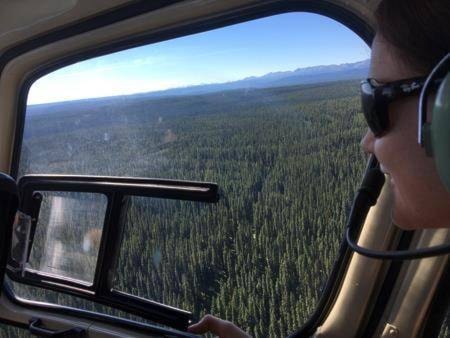Canada’s forestry industry says a proposed federal plan to protect caribou is a risky experiment that will do little to help the animals, but will hurt companies already struggling with U.S. softwood tariffs.
Derek Nighbor, chief executive officer of the Forest Products Association of Canada, wrote to Environment Minister Catherine McKenna this week asking her to rethink the proposed caribou action plan issued in late July.
The caribou are a Canadian icon people see every time they look at the back of a quarter, but scientists have said they will become extinct without an effort to stop their decline.
Nighbor said the industry wants to protect the animals as much anyone, but the federal plan is based on incomplete science about the impact of industrial activities and doesn’t consider other factors such as climate change, air pollution, natural predators and disease.
He said recent research suggests caribou populations in places with little industrial activity, such as Banff National Park and northern Labrador, are declining but populations in some places with high levels of disturbance, such as the Lac Saint-Jean region of Quebec, are thriving.
The federal plan includes an investment in additional research and requests feedback from any organization or person who has updated science, but the forestry association fears an October deadline for provinces to produce caribou range plans means incomplete science will be used to establish the recovery strategy.
Kate Lindsay, a biologist and vice-president of sustainability and environmental partnerships for the forestry association, went on a helicopter tour of caribou habitat in Alberta this week and said from the sky caribou ranges listed on paper as being highly disturbed appear lush, green and with large swaths of untouched forest.
She said it has become clear to her that each of Canada’s 51 caribou ranges has different needs and impacts and must be treated individually.
For example, she said climate change is driving deer and moose populations further north and wolves are following them, which means wolves are going after caribou in places they never were before.
However she says Ottawa remains insistent that all the range plans stick to the requirement to restrict industrialization of any one individual caribou range to 35 per cent of that habitat.
“There is a relationship between disturbance and how caribou are doing but we don’t think it explains the entire picture … so to apply a blanket or broad stroke approach to recovering caribou in Canada using the 65-35 approach won’t be successful,” said Lindsay.
Jonathan Wilkinson, Vancouver-area Liberal MP and parliamentary secretary to McKenna, said Friday the provinces are working on their plans and the government expects most of them to be ready by the October deadline, which was set five years ago.
Wilkinson said if provinces are struggling to complete the plans for some of the 51 ranges, Ottawa can be flexible, as long as there is a timeline for completion.
“At a certain point, it is incumbent on a government in Canada who has species-at-risk legislation in place and that believes in the protection of biodiversity, it is incumbent on us to act,” said Wilkinson.
He noted the plans are expected to take into consideration the latest science, all relevant factors including climate change and also impacts on local communities and industries.
Eric Hebert-Daly, national executive director of the Canadian Parks and Wilderness Society, told The Canadian Press this week the science around the impact of human activities like logging and oil and gas development, on caribou is “very solid.”
He said the decision on what percentage of habitat to protect is a political question of balancing interests.
“We’re not interested in killing jobs,” he said. “We’re interested in finding solutions that are going to work.”
